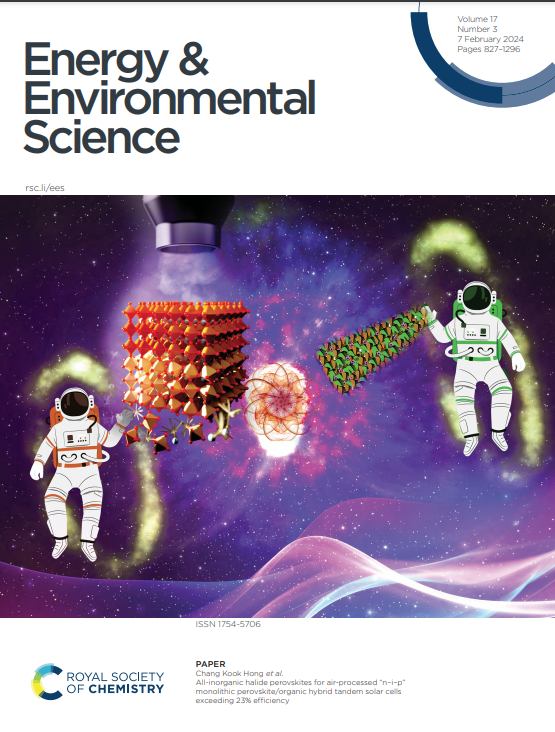Operando single-particle imaging reveals that asymmetric ion flux contributes to capacity degradation in aged Ni-rich layered cathodes
IF 32.4
1区 材料科学
Q1 CHEMISTRY, MULTIDISCIPLINARY
引用次数: 0
Abstract
Extensive worldwide efforts have been made to understand the degradation behavior of layered Ni-rich LiNixMnyCo(1−x−y)O2 (NMC) cathodes. The majority of studies carried out to date have focused on thermodynamic perspectives and are conducted ex situ; operando investigations on aged materials, especially those that can resolve dynamic information in a single-particle level remain sparse, preventing the development of long-term stable NMCs. Here, we directly visualize the real-time Li-ion transport kinetics of aged Ni-rich single-crystal NMC under operando conditions and at single-particle level using a recently developed optical microscopy technique. For both fresh and aged particles, we identify Li-ion concentration gradients developing during the early stages of delithiation – resulting in a Li-rich core and Li-poor surface – as observed previously and attributed to low Li-ion diffusivity at high Li-occupancies. Critically, in contrast to fresh particles, the Li-ion gradients in aged particles become markedly asymmetric, with the Li-rich core shifted away from the center of mass of the particle. Using ex situ transmission electron microscopy, we show that cell aging produces an uneven build-up of a surface rocksalt layer. Supported by finite-element modelling, we attribute the asymmetric delithiation behavior of the aged particles to this uneven rocksalt layer, which impedes the Li-ion flux heterogeneously at the particle surface. Our results demonstrate a new mechanism that contributes to the capacity and rate degradation of Ni-rich cathodes, highlighting the importance of controlling the build-up of detrimental interfacial layers in cathodes and providing a rational for improving the long-term stability and rate capabilities of Ni-rich NMC cathodes.求助全文
约1分钟内获得全文
求助全文
来源期刊

Energy & Environmental Science
化学-工程:化工
CiteScore
50.50
自引率
2.20%
发文量
349
审稿时长
2.2 months
期刊介绍:
Energy & Environmental Science, a peer-reviewed scientific journal, publishes original research and review articles covering interdisciplinary topics in the (bio)chemical and (bio)physical sciences, as well as chemical engineering disciplines. Published monthly by the Royal Society of Chemistry (RSC), a not-for-profit publisher, Energy & Environmental Science is recognized as a leading journal. It boasts an impressive impact factor of 8.500 as of 2009, ranking 8th among 140 journals in the category "Chemistry, Multidisciplinary," second among 71 journals in "Energy & Fuels," second among 128 journals in "Engineering, Chemical," and first among 181 scientific journals in "Environmental Sciences."
Energy & Environmental Science publishes various types of articles, including Research Papers (original scientific work), Review Articles, Perspectives, and Minireviews (feature review-type articles of broad interest), Communications (original scientific work of an urgent nature), Opinions (personal, often speculative viewpoints or hypotheses on current topics), and Analysis Articles (in-depth examination of energy-related issues).
 求助内容:
求助内容: 应助结果提醒方式:
应助结果提醒方式:


